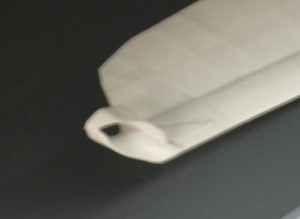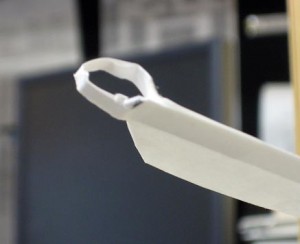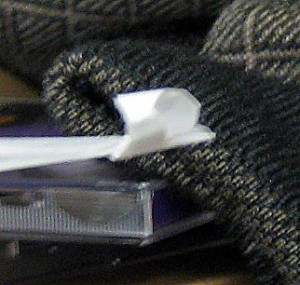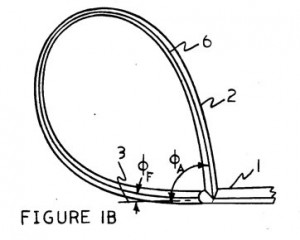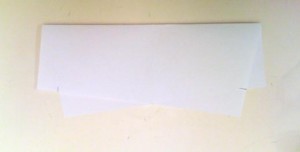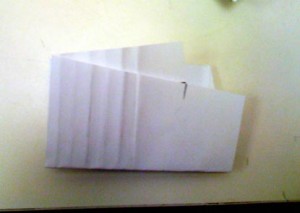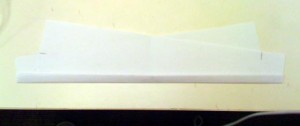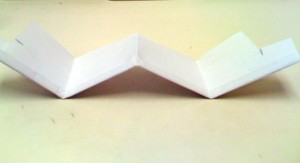Like the previous post, this is excerpted from “How To Make And Fly Paper Airplanes,” by Captain Ralph Barnaby, U. S. Navy, Retired.
Launching a Model in Aerial Maneuvers
The kinds of maneuvers that can be made with paper airplanes depends on (1) adjustments of control surfaces before launch, since there is no way of changing them in flight, and (2) technique of launching. Technique of launching in turn breaks down into speed of launching, attitude of model at time of release and direction of release.
The maneuvers most easily performed with paper airplanes are circles, turns and loops. But before a model can execute any maneuver it must be made to fly a straight-line glide. This is critical. If a model does not fly a straight glide, it will not perform maneuvers properly. So let’s review the straight glide launching.
Hold the Barnaby model by the body ahead of the trailing edge. Make sure the wings are level and aim the nose along what you believe to be the normal glide path. Move the model ahead along the projected flight path at what you estimate to be the gliding speed. Release the model.
Take care that you do not alter the attitude of the model as you launch it. Keep your eye on the model and concentrate on the center-line. Think of moving your hand in a path parallel to the center-line.
Also, don’t release the model with a snap of the wrist. You will change the model’s flight path. Instead, follow through with your launching arm.
Remember, practice makes perfect!
Once you have the straight glide launching down pat, you are ready for maneuvers.
Circles
Circular flights are made in a path more or less parallel to the ground. Most paper airplanes, except the darts, can fly circles, but the best performers are models with greater wing span like the Barnaby and the swept-wings.
Whether a model flies a full or partial circle depends on (1) the amount of up-elevator applied, (2) the angle of bank at which the model is released and (3) the speed of launching.
 Here are directions for launching models in left and right turns. I assume you are right-handed. If you are left-handed, simply alter the instructions as necessary.
Here are directions for launching models in left and right turns. I assume you are right-handed. If you are left-handed, simply alter the instructions as necessary.
Grasp the model by the nose. Hold the model in a vertical bank, underside toward you.
Now, for a circle to the left, hold the model at your left, nose pointing toward the right. Quickly and smoothly draw your hand straight across to the right. Release the airplane without changing this line. Any twist of the wrist will cause erratic flight. Launched properly, the model should fly a circle and then, if enough altitude remains, finish up in a straight glide.
For a circle to the right, hold the model out at your right, nose pointed to the left. Pull your hand straight across toward the left and release the model.
For a complete circle that returns to your hand, hold the model clear up on the edge and launch it at high speed. I have had some models that would perform two complete circles and return to my hand. Such trick flights depend on precise balance and careful launching–both of which require considerable practice.
Turns
A turn is simply an incomplete circle. So to make your model fly a turn hold it in position for a circle, but bank it less and don’t push it so hard. The model should fly part of a turn, then straighten out into a normal straight-line glide.
 If you find you do well with turns, you might try your hand at S-turns. For a left-right S-turn, give your model a little right rudder and then launch it in a left turn. The model should fly part of a left turn, slow down, level out and go into a right turn. For a right-left S-turn, simply reverse the procedure.
If you find you do well with turns, you might try your hand at S-turns. For a left-right S-turn, give your model a little right rudder and then launch it in a left turn. The model should fly part of a left turn, slow down, level out and go into a right turn. For a right-left S-turn, simply reverse the procedure.
Whatever you do, don’t try to fly turns with a poorly aligned model that turns when launched into a straight glide. If it has a tendency to turn, say, to the left when launched straight, it will lose altitude or dive on being launched to fly a left turn. When launched for a right turn, it will climb. On the other hand, if a model makes perfect turns in both directions, it is pretty sure to fly straight when so launched.
Loops
Loops are made in a path perpendicular to the ground. To prepare your model for a loop, you must first, of course, get it to fly a straight glide. Your next step is to give the model extra up-elevator. Curl up the trailing edge of the tail somewhat more than for a normal glide.
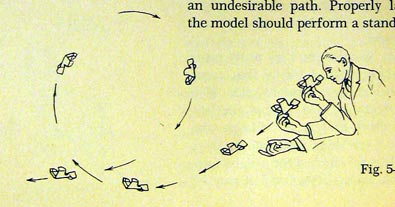
Grasp the Barnaby by the leading edge and launch it fairly fast on a slightly downward path, as seen at the left. If the model does not fly all the way around a loop, try a faster launch or more up-elevator, or perhaps a little of both. Be sure the wings are level at launch. If the model is tilted sideways, it will do a climbing turn and dive instead of a loop.
After completing a loop, a model will probably do a series of roller-coaster dives and climbs. If properly balanced, they should gradually dampen out into normal glide–possibly with slight up-and-down undulations because of the stabilizing effect of the increased elevator.
There is another way to loop the loop. Hold the model nose-up with the top surface away from you. Now pull the airplane straight up, releasing the model in front of your face. The airplane should loop away from you, then return so you can catch it in your hand.




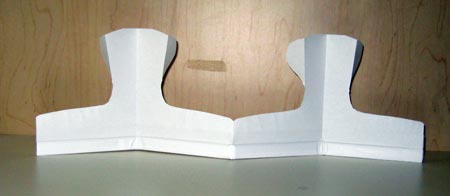
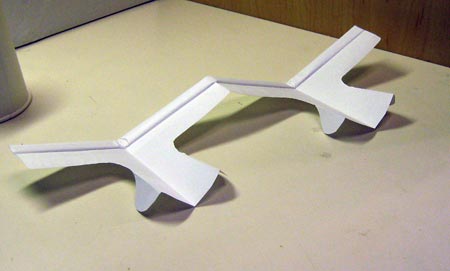
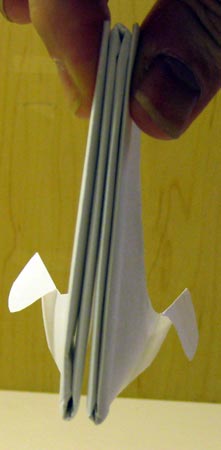
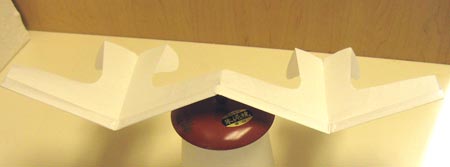
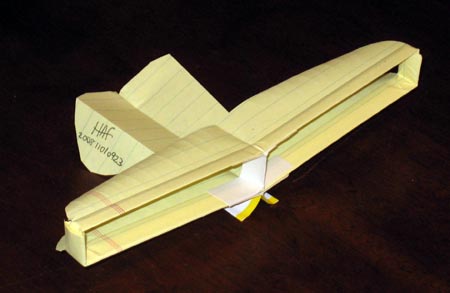

 Here are directions for launching models in left and right turns. I assume you are right-handed. If you are left-handed, simply alter the instructions as necessary.
Here are directions for launching models in left and right turns. I assume you are right-handed. If you are left-handed, simply alter the instructions as necessary. If you find you do well with turns, you might try your hand at S-turns. For a left-right S-turn, give your model a little right rudder and then launch it in a left turn. The model should fly part of a left turn, slow down, level out and go into a right turn. For a right-left S-turn, simply reverse the procedure.
If you find you do well with turns, you might try your hand at S-turns. For a left-right S-turn, give your model a little right rudder and then launch it in a left turn. The model should fly part of a left turn, slow down, level out and go into a right turn. For a right-left S-turn, simply reverse the procedure.

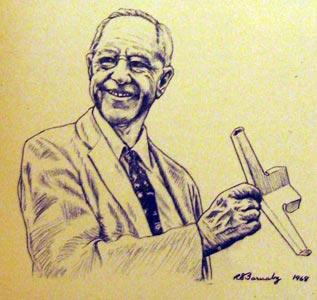
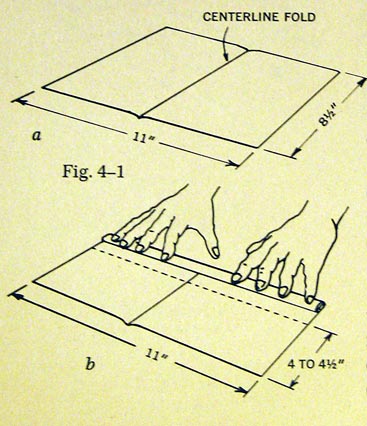




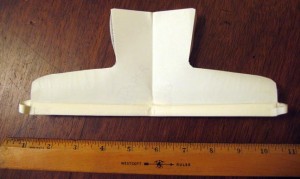
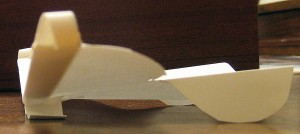
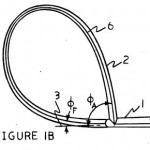

 the paper is folded in half both ways to establish the keel and the leading edge. The winglet is just as thick as the leading edge. The paper for the spiroid is folded on a diagonal, corner to opposite corner, then trimmed for symmetry (a diamond). The leading edge is folded up from a wide corner, so the narrow corners become the wingtips. There is only one or two thicknesses of paper there. A ribbon curl, tape to hold the tip to the wing, a diagonal cut, and a spiroid. It is not completely there, as the true spiroid has a slightly more complex shape.
the paper is folded in half both ways to establish the keel and the leading edge. The winglet is just as thick as the leading edge. The paper for the spiroid is folded on a diagonal, corner to opposite corner, then trimmed for symmetry (a diamond). The leading edge is folded up from a wide corner, so the narrow corners become the wingtips. There is only one or two thicknesses of paper there. A ribbon curl, tape to hold the tip to the wing, a diagonal cut, and a spiroid. It is not completely there, as the true spiroid has a slightly more complex shape.